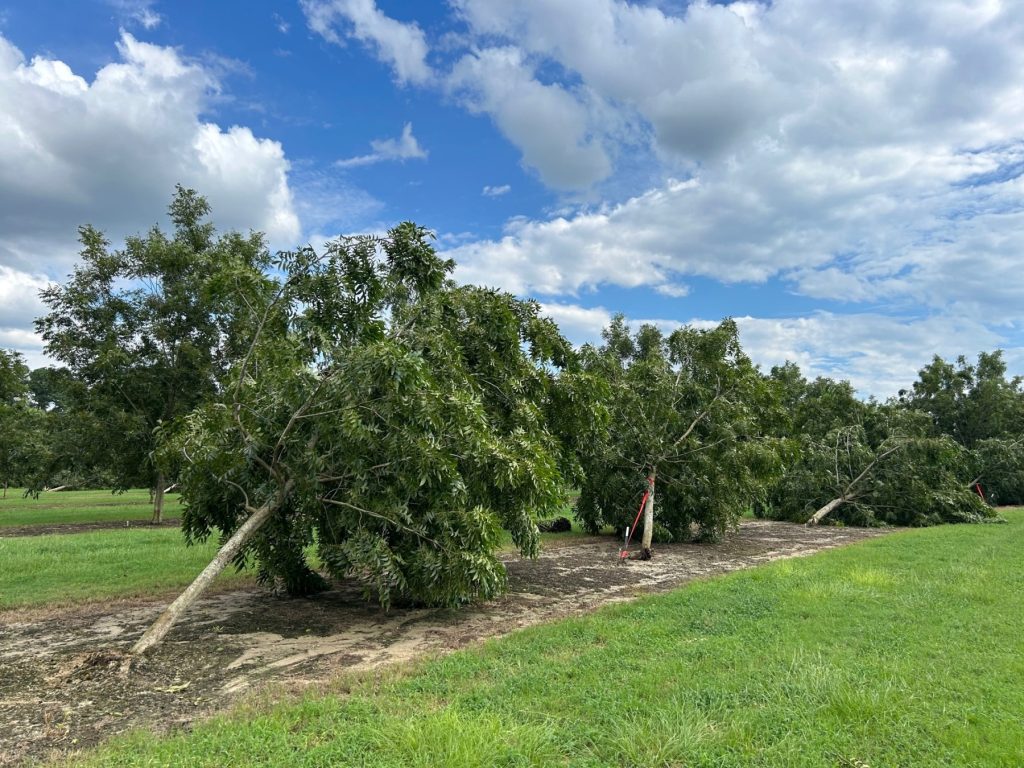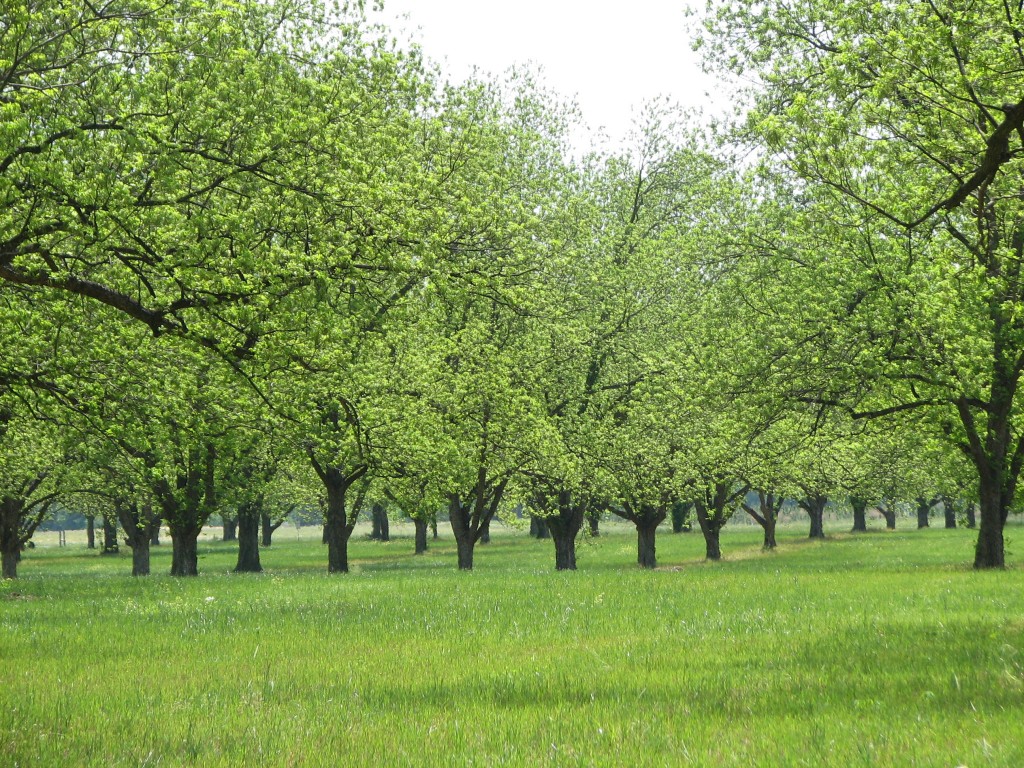
As we all know, Georgia pecan growers are no strangers to hurricanes. Hopefully, we won’t have to deal with another one in 2025. Its difficult to manage a pecan orchard in a way that can have much effect in protecting it from something as powerful and out of our control as a hurricane. However, over the last year or two, I have been working with landscape ecologist, Dr. Jeff Cannon from the Jones Center at Ichauway to better understand the patterns of damage in pecan orchards. Our post-Hurricane Idalia survey found that diversifying orchard age structure and canopy management—such as pruning—can influence vulnerability to wind damage.
Our results support that damage susceptibility of pecan trees increased with wind speed and was highest among intermediate size classes, peaking at 12-14″ dbh. Because both nut yield and wind susceptibility vary with age, careful consideration of landscape-scale orchard age structure may help mitigate wind risk in pecans. We found that damage susceptibility increased (obviously) with maximum sustained wind speed, ranging from approximately 15–40 % with winds of 45 mph (Tropical storm winds), and rising to 70–80 % at sustained winds of 78mph (Category 1 hurricane winds). Studies of wind disturbance typically find that wind susceptibility is highest among intermediate-sized trees .
In inter-planted orchards, small trees are often in subcanopy positions where they are sheltered from extreme winds by larger surrounding trees. In orchard settings with wide tree spacing, protection from neighbors may be less important, except in cases of under-planted orchards. However, other mechanisms, such as increased stem elasticity among young trees may reduce the probability of lethal damage among younger pecan trees . Large trees with sprawling crowns should be exposed to greater wind by drag, yet they can also exhibit sublethal damage patterns such as defoliation or broken limbs and crowns. This sublethal damage can substantially reduce drag and may afford protection from more severe damage such as uprooting or snapping.
This information highlights the need for us to slow down the growth rate on our young pecan trees to allow the root systems to catch up to the canopy size for better anchorage at these vulnerable tree sizes.
Our next step is a statewide analysis to assess how soil types and landscape features contribute to risk, with the goal of supporting future orchard site planning and management.
You can find the link to our first research publication on this topic below:
https://www.sciencedirect.com/science/article/pii/S0304423825002857
